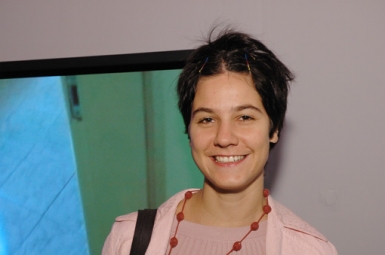Displacing subjectification toward material sets may seem paradoxical. Thus we shall speak of partial subjectifications: the city, the street, the building, the door, the hall-each itself and in composition a center of subjectification. - Félix Guattari
On the inside of houses for rent, we are guided by a camera-eye that sweeps away the absence of life and affection. Desolate spaces eager to be inhabited, soothed by dialogues and romantic songs from radio shows that bring people looking for love closer to each other. The publically announced intimacy invades a space that appears to be intimate, but in fact holds nothing. It just waits, empty, for the next tenant.
It is in this situation-between inside and outside, between the intimate made public and the quasi-intimacy of the empty house-that Fernanda Goulart constructed Alugo-me (2004). Derived from an installation that would invite us to come close to the small monitor in order to hear the audio, the video discloses, with strict subtlety, the spaces of intimacy. Shown in the New Vectors exhibition of the 15th Videobrasil (2005), it is the starting point for the third FF>>Dossier of the Outros espaços [Other Spaces] series, centered around the relatioship between electronic image and space.
Landscape Theory (2005), by Roberto Bellini, which approaches the politics of space, inaugurated the cycle. Then there came the tension and the emptiness of Uyuni (2005), by Andrés Denegri. Now, with Alugo-me, the series comes to a sort of frayed intimate space, exposed in the rawness of empty houses, and of the speech of people seeking affection to fill up their own emptiness. A space “in which intimate stories cross the empty landscape of the architecture that was once inhabited,” in the words of artist and art critic Yana Tamayo, who analyzes, in the Essay, the tensions between public and private, typical of the experience of searching for the other, as displayed in Alugo-me.
Further info on this artist available at the collection
